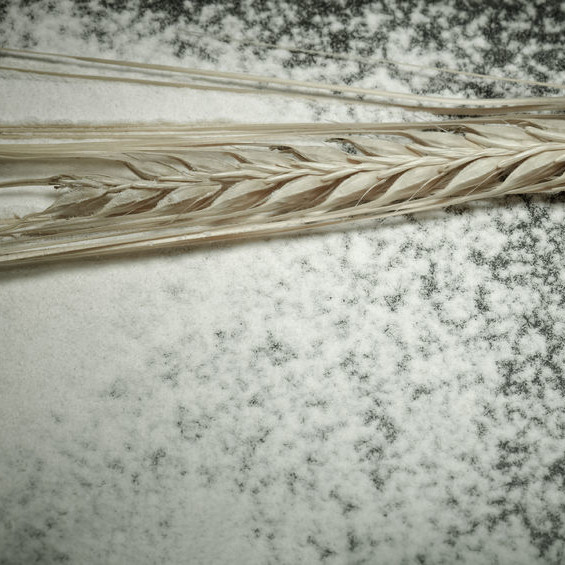
Roller Milling
Also known as flour milling
What is roller milling?
Roller milling is one of many methods used to produce flour. It is a process used to separate the anatomical parts of grain kernels—like the bran, aleurone layers, germ and endosperm—and grind them down into fine flour particles. The flour is then used in the production of bakery products, pasta, breakfast cereals, pet foods and snacks.1
In the cereal industry, the goal of flour milling is to extract the maximum amount of endosperm from the grain while minimizing ash content (bran and germ contamination). Extraction in dry milling is defined as 1 Kg of white or straight grade flour obtained from 100 Kg of whole grain.1
Origin
The milling of grains is an ancient art and craft. The first evidence of grinding grain dates back 8,000 years. As people use to say, “The first miller was the first person to put a wheat kernel into the mouth and bite.” There is evidence of sieves or nets to separate flour from unwanted parts of the wheat grain as early as 6000 B.C. The first mechanical mill, known as quern, employed two horizontally mounted stone disks. Grains such as wheat and corn were fed between them, while the disks were manually rotated.2
How does roller milling work?
The seven main steps in roller milling are:3
- Tempering or conditioning. Cereals such as wheat need tempering so the bran layers can be softened enough to become flexible and removed as larger pieces. Tempering also softens the endosperm to facilitate its reduction during milling, reducing the occurrence of damaged starch.
- Break system. Thanks to a combination of shear, friction/abrasion and impact forces, the grain or kernel is broken/fractionated into wide particle-sized pieces during distribution. This step separates the endosperm from the bran and germ components. Fluted or corrugated roller mills are used for this step.
- Sizing or classification system. This step separates the small bran pieces attached to the ground large pieces of endosperm, according to particle size and specific gravity (density). Sifters and purifiers are involved in this step.
- Reduction system. This step reduces the endosperm pieces (known as middlings) to flour. This step uses smooth roller mills.
- Tailings system. This step separates the fiber or bran from the endosperm recovered from the other three systems.
- Blending. Based on the final use or application, the miller adjusts or blends the different flours (streams) that are produced during the milling process. Parameters such as ash and protein content can be controlled at this point.
- Final treatment. In certain wheat flours, treatments may include enrichment, bleaching, and enzymes or malt supplementation.
These steps require a series of repetitions in order to obtain the different fractions of granular materials such as straight grade flour, germ and bran (mill feed). Quality aspects related to dry milling often include:4
- Amount of damaged starch
- Variations in color due to ash content (bran contamination)
- Particle size distribution
- Protein and moisture content
- Water absorption
- Enzymatic activity
- Baking strength or quality
- Pasta making strength or quality
The American Association of Cereal Chemists (AACC) has established and published several standardized methods for quality analysis usually performed during milling. The following are a few examples:
- Method 76-31.01. Determination of damaged starch—Spectrophotometric method
- Method 08-01.01. Ash—Basic method
- Method 38-12.02. Wet gluten, dry gluten, water-binding capacity, and gluten index
- Method 44-19.01. Moisture—Air-oven method, drying at 135°C
- Method 46-30.01. Crude protein—Combustion method
- Method 10-05.01. Guidelines for measurement of volume by rapeseed displacement
- Method 54-21.01. Farinograph Method for Flour
- Method 54-30.02. Alveograph Method for Soft and Hard Wheat Flour
- Method 55-60.01. Guideline for Determination of Particle Size Distribution
References
- Aleksandar Z. Fišteš and Đuro M. Vukmirović. “Reduction of Wheat Middlings Using a Conventional and Eight-roller Milling Systems.” Institute for Food Technology, APTEFF, 40, 1-220 (2009), pp. 25–34.
- Finnie, S., and W.A. Atwell. “Milling.” Wheat Flour, 2nd ed., AACC International, Inc., 2016, pp. 17–30.
- Posner, E.S. “The Grinding Process.” Wheat Flour Milling, 2nd printing, AACC International, Inc., 2011, pp. 185–200.
- M.A. Loza-Garay, and R.A Flores. “Moisture, Ash and Protein Flow Rate Study in a Wheat Flour Pilot Mill Using Simulation Models.” Institution of Chemical Engineers (IChemE), Volume 81, Part C, 2003, pp. 180–188.

